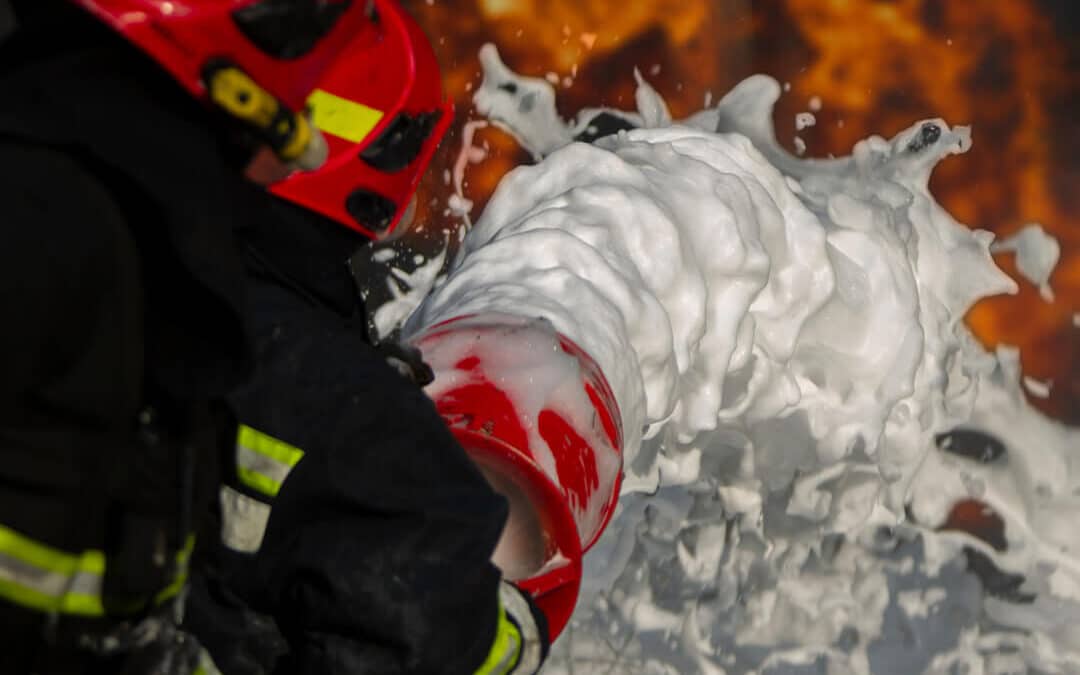Aqueous Film-Forming Foam (AFFF), has been a critical tool used in fighting flammable liquid fires for many years. However, recent studies have raised concerns about the potential health and environmental hazards associated with the use of AFFF.
The History of Firefighting Foam
The firefighting foam AFFF was developed in the late 1960s as an effective way to extinguish fires involving flammable liquids such as petroleum and jet fuel. AFFF suppresses fires by forming a thin film on the fuel, preventing the release of flammable vapors.
AFFF soon became a key part of firefighting operations, especially in industries with a high risk of flammable liquid fires, such as aviation, oil and gas, and chemical manufacturing.
Firefighter Foam Health and Environmental Concerns
A major concern surrounding AFFF is the presence of polyfluoroalkyl substances (PFAS), a group of synthetic chemicals known for their persistence in the environment and potential adverse health effects.
Several studies have linked PFAS exposure to health issues, such as liver damage, immune system dysfunction, and hormone disruption. Most notably, PFAS exposure is linked to an increased risk of developing the following types of cancer:
- Bladder cancer
- Kidney cancer
- Pancreatic cancer
- Testicular cancer
- Liver cancer
- Breast cancer
- Leukemia
- Lymphoma
- Ovarian cancer
- Prostate cancer
Using AFFF has also raised concerns about its impact on the environment. PFAS compounds are highly persistent in the environment and can accumulate in water sources, soil, and wildlife. Contamination from AFFF has been found in groundwater, surface water, and drinking water supplies near firefighting training facilities and airports.
In response to the growing concerns about AFFF exposure, some fire departments and industries have transitioned to firefighting foams that do not contain PFAS compounds. These alternatives aim to provide effective fire suppression capabilities without the associated health and environmental risks.
Government agencies, such as the Environmental Protection Agency (EPA) and state regulatory bodies, have also taken action to address the risks associated with AFFF. Some states have implemented stricter regulations on PFAS contamination.
Lawsuits about Firefighter Foam Damages
In recent years, individuals and communities affected by PFAS contamination have filed class action lawsuits against manufacturers of AFFF. These lawsuits allege the manufacturers knew about the health and environmental risks associated with PFAS but failed to warn or protect the public.
Besides class action lawsuits, individual firefighters and communities have pursued negligence and product liability claims against AFFF manufacturers. These claims argue the manufacturers failed to exercise reasonable care in designing, testing, and marketing their products, leading to harm and damages.
Individuals and communities affected by PFAS contamination may be eligible for financial compensation through settlements or court judgments. Compensation can help cover medical expenses, property damage, loss of income, and other related costs.
Getting Help Filing a Firefighter Foam Lawsuit
If you have been exposed to PFAS through long-term exposure to AFFF and developed cancer, you could receive compensation for your injuries. As you will need to provide proof of your injury claim, you may wish to consult with an experienced personal injury lawyer. An experienced lawyer can help you gather all the documents and information you need and help present your case to the court.
Contact us today for a free evaluation of your firefighter foam injury claim and let us help you get the compensation you deserve.

